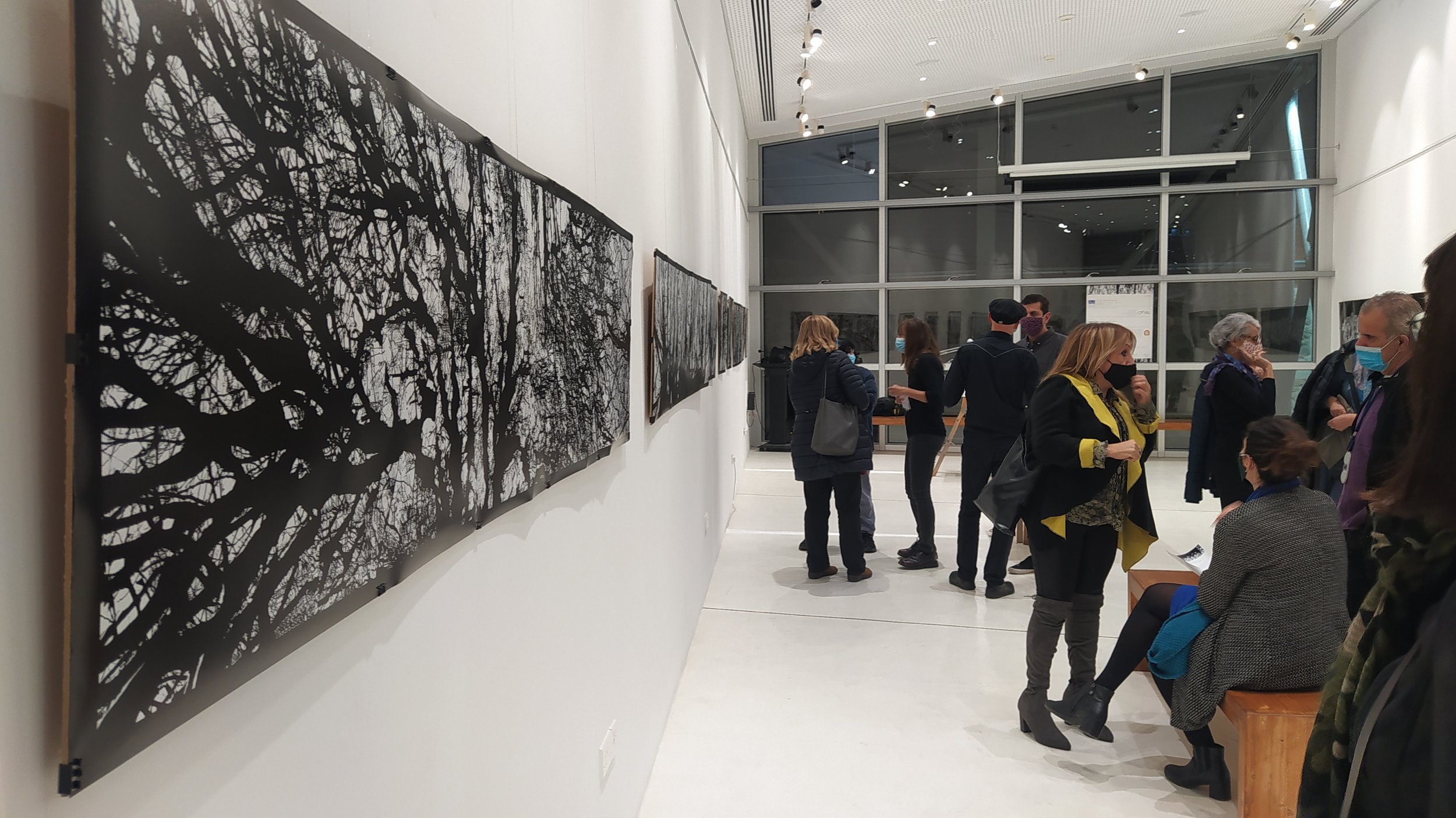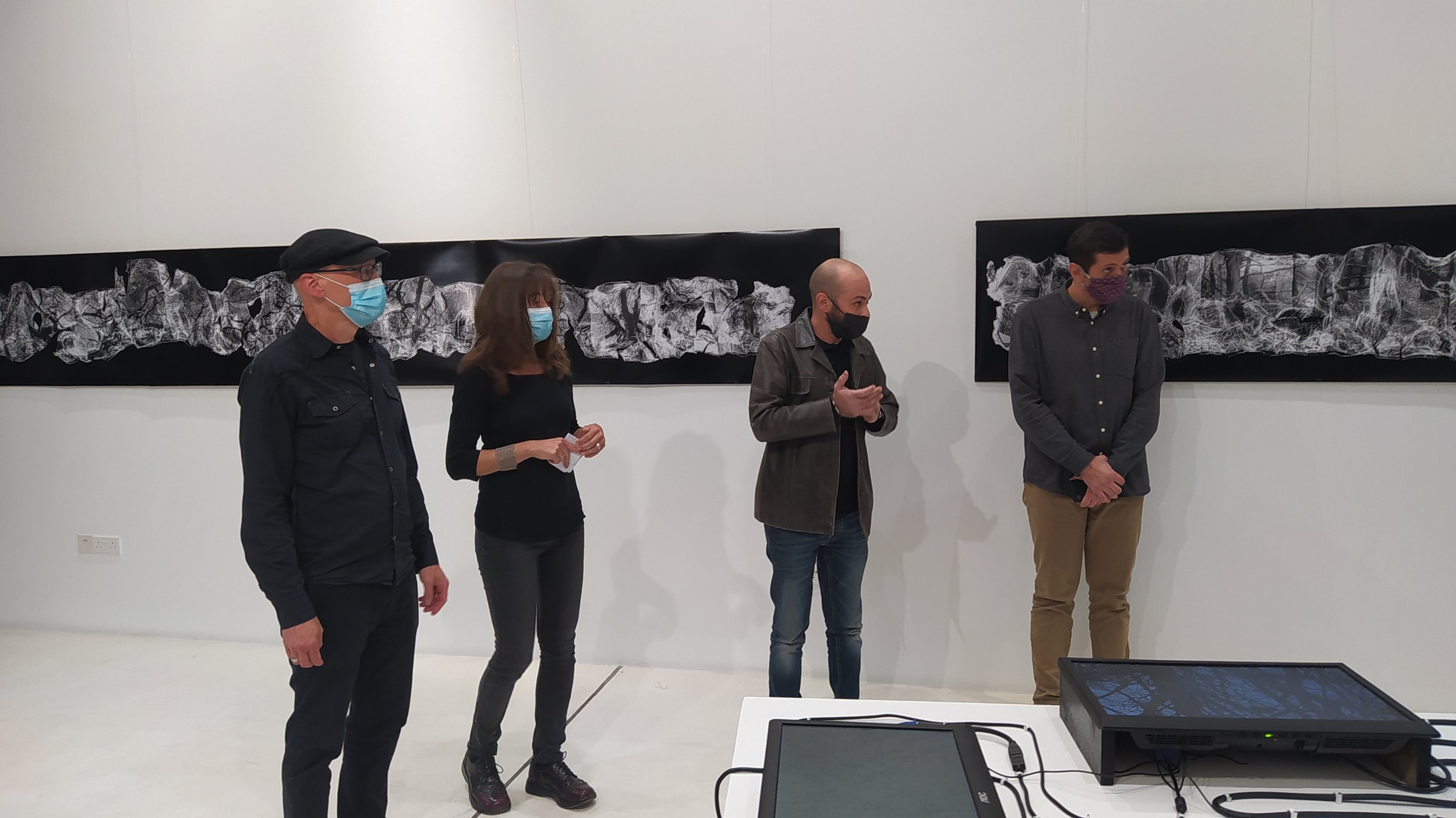Gabriela Bulisova & Mark Isaac
The debut of any exhibition is bursting with nervous energy, and our opening in Pafos, Cyprus at the Municipal Gallery was no exception. But following the stressful job of meticulously editing photos, printing and reprinting, perfecting the multi-channel video, composing a soundtrack, arranging found objects, posting blogs, and preparing remarks, the opening of A Tree for the Forest, our exhibition about the role of trees in the climate crisis, came off without a hitch. A huge named storm predicted to hit the island paused until the event was over. The oversized pictures stayed on the wall; the videos kept looping; the found objects captured attention; the speeches were compact and meaningful, and most importantly, the reception of the work was extremely positive.
The opening remarks were initiated by Yiannis Sakellis of Kimonos Art Center, our hosts here in Pafos. The Center has truly gone above and beyond in supporting our work here, and they are an incredible asset to the community.
Orestis Matsas, a local activist, weighed in on the impact of the climate crisis in Cyprus. As part of the Mediterranean region, Cyprus is a climate hotspot, meaning temperatures are rising more quickly, and effects are felt sooner and more strongly, than other parts of the world. His remarks, laden with facts and details about the threats Cypriots face, added an important dimension to the evening’s proceedings.
There was substantial interest in Gabriela’s process for creating her work focused on wildfires. She used an antique analogue camera (a Zeiss Ikonta, produced during the era of World War II), treated the entire roll of film as a single forest landscape, and then selectively burned her images to emphasize the tragic impact of fires. She printed them very large (a full 4.5 meters, or 15 feet wide) to capture attention and emphasize the need for action.
Mark’s process is also a bit unusual. He makes panoramic photographs of the treetops that are focused on the recent scientific discovery that trees communicate extensively through underground fungal networks. The research also shows that older “mother trees” support the health of younger trees around them. Since the root networks of trees reach about the same distance from the trunk as the crown, his images of the trees overhead strongly suggest the manner in which roots and fungal networks are mingling and communicating. The camera is prone to making “mistakes” as it strives to knit the treetops together, but the accidents it records express the truth better than a more “accurate” representation.






Photos by Charalambos Margaritas, Kimonos Art Center
Many attendees also wanted to share what they saw in our experimental images of trees, including spider webs, spirits, human figures, and superheroes. Very aptly, one person identified a very plausible pair of lungs in one of Gabriela’s large panoramas of trees burnt in wildfires.
More importantly, students approached us both to ask what we think are the most important actions to take to prevent a climate catastrophe. We did our best to share conventional means of fighting off an impending tragedy, including changes in personal habits like driving less, avoiding plastic, and eating less meat and dairy. But we were also careful to include a political dimension, including voting, writing to elected representatives, avoiding the products of companies that contribute to the crisis, protesting, and even engaging in organized civil disobedience. We were extremely glad they were motivated to ask.
Art openings are not a particularly good time to experience the artwork. They’re more of a christening, a celebration, a time to thank those who helped create the opportunity, and an opportunity to greet attendees. But hopefully the evening of December 18th was also a time for something larger.
Today, art demands a bit more of us. And the title of our exhibition hints at this. Sometimes, the climate crisis seems too big and too overwhelming to even find a way to act. But as we noted in our remarks, we can each find small things to change, and those small changes, around the world, can add up to a huge wave. In this way, we can all be a Tree for the Forest, standing tall, communicating with others, and protecting what is precious.
